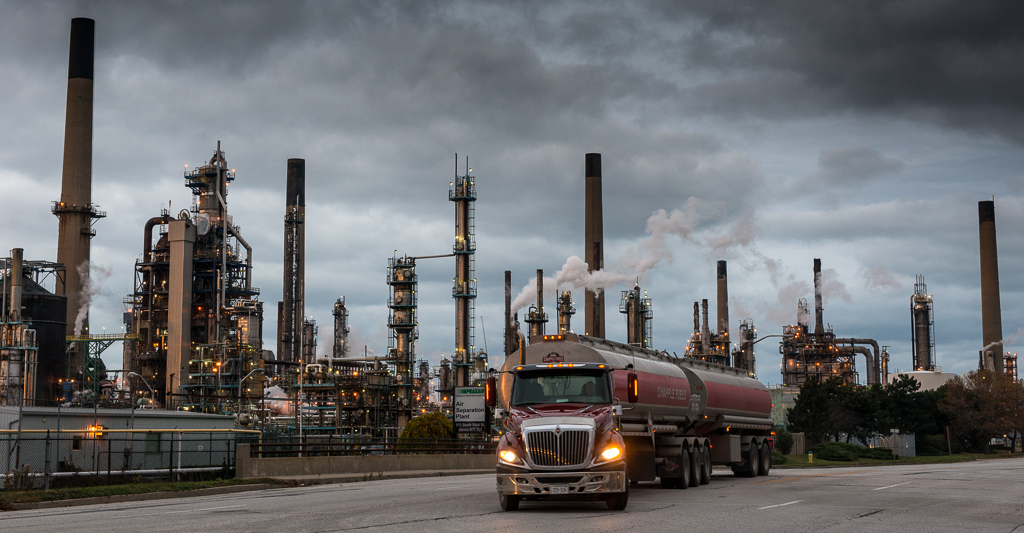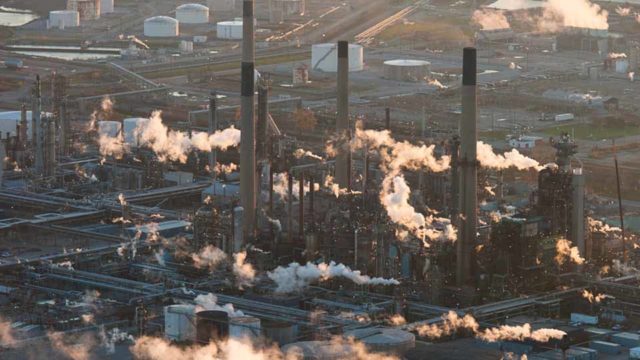Approval process ignores risks of living near multiple-emitters
At Ecojustice, we believe that everyone has a right to a healthy environment, including clean air and water. Many Ontario communities are being denied this right, which compounds other health risks — poor air and water quality can contribute to respiratory and reproductive problems, cancer, and developmental problems in children.
Over the next two decades, poor air quality will cause the premature deaths of nearly 700,000 Canadians. In Ontario, pollution from fine particulate matter alone causes as many as 900 cancer cases per year.
However, not all Canadians experience those health risks equally. This results in a situation that can be best described as environmental injustice.
Low-income and Indigenous communities are disproportionately exposed to environmental hazards like outdoor air pollution. In fact, more than 1 million Canadians in low-income communities live within one kilometre of a pollution-emitting facility. Comparatively, only 352,000 people living in affluent communities live within this same distance. The inequitable sharing of the pollution burden is worsened by the fact that individuals in low-income and Indigenous communities are often more vulnerable to the health effects caused by the pollution. For instance, social stressors and nutrition deficiencies can alter immune function and the way the body reacts to pollutants, particularly in young children.
The Ontario Auditor General’s 2016 Annual Report should be a wake-up call to government decision-makers responsible for making sure polluters are not harming people and the environment. In Canada, southern Ontario has the highest levels of sulphur dioxide — a contaminant known to affect the respiratory system. According to the report, it also has the second highest level of fine particulate matter, which harms cardiovascular and respiratory health.
The Auditor General found the Ministry of Environment and Climate Change (“MOECC”) “is not effectively managing the risks to the environment and human health from polluting activities.” The report identified several weaknesses in the MOECC’s current approach to environmental approvals, including:
- Failing to identify and take action to stop emitters who operate without proper approvals. According to the Report, there may be as many as 12,000 such emitters in the province.
- Failing to update more than 200,000 out-of-date approvals that do not meet current environmental standards or reflect emitters’ current operations.
- Insufficient monitoring to prevent and detect regulatory violations that pose risks to the environment and human health. When penalties are levied by the MOECC, they are not substantial enough to deter repeat offenders.
- Failing to require adequate financial security for high-risk activities to hold polluters (and not the public) financially accountable for spills and future clean-up.
- Inadequate public consultation and transparency.
- Poor management of public complaints and reports of contaminant spills.
- Failure to assess the environmental and health impacts of multiple emitters within various regions of the province. The MOECC reviews each emitter’s data individually for compliance with environmental approval limits, effectively ignoring cumulative air emissions in communities with multiple major emitters.
Failing to effectively regulate polluting activities has real consequences for the environment and the health of Ontarians. That’s why Ecojustice lawyers and scientists have been working for years to address many of the problems identified in the Auditor General’s Report.
Back in 2009 we filed an application for review on behalf of two residents of Aamjiwnaang First Nation. We asked the MOECC to review how it regulates air emissions in pollution “hot spots,” pointing to the need to consider and address cumulative effects. In 2010, the Ministry committed to the review and we have been working since then to ensure it follows through on its promise. Nearly seven years have passed, and the MOECC continues to approve individual projects in heavily industrialized communities — such as Sarnia’s Chemical Valley — without considering the cumulative health and environmental effects a cluster of polluting facilities can have on local communities.
Alarmingly, the Auditor General found that the MOECC does not know the cumulative impact industrial emissions have on human health. Community members should not be forced to wonder what is being emitted by their industrial neighbours and whether it will harm them or their family. This is an urgent human rights crisis.
Despite a delayed response, the MOECC has recognized it must assess the cumulative effects of air pollution, particularly in communities that have several major polluters. Working with the Canadian Environmental Law Association and Environment Hamilton, we’ve made recommendations to the MOECC on how it can take action now. Basing permitting decisions on precautionary, protective assessments of the cumulative effects of air pollution will go a long way towards correcting this environmental injustice.
Fundamentally, Ontario should recognize that all of us, no matter where we live, our income level, or the colour of our skin, have a right to a healthy environment, including air that is safe to breathe. We urge the government to implement a strong cumulative effects policy and act on the Auditor General’s report recommendations as soon as possible — the health of our environment, and that of present and future generations of Ontarians, depend on it.




